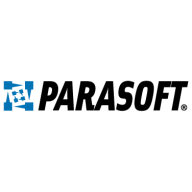

Parasoft SOAtest and Tricentis Tosca compete in the automated testing tools category. Tosca is noted for its superior feature range, advantageous for enterprises needing extensive testing capabilities, while SOAtest is praised for its pricing and robust technical support.
Features: Parasoft SOAtest shines in API testing with support for various protocols, offering integrated tools for functional test scenarios, data-driven testing, and customization through scripting. It is highly valued for composite applications, end-to-end testing, and integration features. Tricentis Tosca's standout model-based, scriptless automation simplifies testing for non-technical users, providing comprehensive web, mobile, and desktop application support, with robust risk-based testing and data management functionalities.
Room for Improvement: Parasoft SOAtest could improve its UI testing features and make reports more accessible to non-developers. Issues like workspace corruption and complex reporting are noted by users. Tricentis Tosca, while feature-rich, faces challenges with its pricing and licensing models, and users express the need for better integration and AI-related enhancements, as well as more competitive pricing.
Ease of Deployment and Customer Service: Both Parasoft SOAtest and Tricentis Tosca offer on-premises deployment, with Tricentis Tosca providing more flexibility through hybrid and public cloud environment support. Parasoft SOAtest's customer service is acclaimed for efficiency in resolving technical issues, while Tricentis Tosca's proactive support team is similarly well-regarded.
Pricing and ROI: Parasoft SOAtest is appreciated for its favorable pricing, offering comprehensive features at a cost-effective price, leading to positive ROI through workflow streamlining and reduced manual efforts. Tricentis Tosca is perceived as expensive, with high licensing fees posing barriers for smaller companies. Despite the cost, it provides significant benefits for large enterprises, resulting in a substantial but costly ROI.
We found Parasoft SOAtest to be quick in building up test patterns, allowing us to create complex tests efficiently.
Tasks that previously took four or five minutes can now be completed in 20 to 30 seconds with the help of the tool.
Tasks that typically take ten hours are reduced to two to three hours, representing a threefold productivity gain.
My experience has been positive; their response to emails or phone calls in tech support is fast, usually between eight to ten hours.
They provide 24/7 support with resolution times within one to two hours.
There is no way to mark the importance or criticality of incidents when creating them.
It covers a breadth of applications and products, demonstrating excellent scalability that I have seen in reality.
Scalability is excellent with Tricentis Tosca.
In particular use cases with numerous steps, it experiences crashes.
For performance and stability, Tricentis Tosca deserves a 10 out of 10.
The stability of Tricentis Tosca is rated ten out of ten. It is very stable.
I find stability issues when using the Vision AI feature; Tricentis Tosca is not very stable.
It did not support enough of the protocols or cryptography formats we needed, which led us to create our own solutions.
One improvement would be to integrate it with modern technologies such as AI, so we can generate test cases by providing the details so that it can generate the structure, and later the person working can modify and enhance it.
In terms of improvements for Parasoft SOAtest, some features could be added or perhaps existing areas could be improved, such as lowering prices.
If a button in an application changes, Tricentis Tosca should be smart enough to detect the change and still execute the script seamlessly.
The Vision AI implementation works very slowly, affecting the speed of our work.
Moving to a cloud-based application rather than a desktop one could improve Tosca.
Parasoft SOAtest is expensive, but it was acquired because the company was dissatisfied with Quick Test Pro.
The pricing for Tricentis Tosca is extremely high, and I rate it as ten in terms of expense.
A yearly license costs around 20,000 euros.
For enterprise customers, the cost is manageable because it provides solutions for multiple applications they want to automate.
The advantages include the custom tool and the extension tool where you can write scripts in different languages such as Groovy, Java, and Jython.
Parasoft SOAtest improves the quality of the application, increases security and security compliance, and it is a cost-effective tool.
Parasoft SOAtest is very good at ensuring tests don't pass or fail until they genuinely pass or fail.
The most useful features of Tricentis Tosca include API scanning, basic web application automation, and data validation capabilities.
It allows for drag-and-drop functionality and demo automation in SAP-based applications, which can be challenging with other automation tools.
The modular approach reduces scripting effort by at least fifty percent, which significantly cuts down on the script development time.
| Product | Market Share (%) |
|---|---|
| Tricentis Tosca | 18.4% |
| Parasoft SOAtest | 0.9% |
| Other | 80.7% |


| Company Size | Count |
|---|---|
| Small Business | 9 |
| Midsize Enterprise | 3 |
| Large Enterprise | 23 |
| Company Size | Count |
|---|---|
| Small Business | 23 |
| Midsize Enterprise | 24 |
| Large Enterprise | 71 |
Parasoft SOAtest delivers fully integrated API and web service testing capabilities that automate end-to-end functional API testing. Streamline automated testing with advanced codeless test creation for applications with multiple interfaces (REST & SOAP APIs, microservices, databases, and more).
SOAtest reduces the risk of security breaches and performance outages by transforming functional testing artifacts into security and load equivalents. Such reuse, along with continuous monitoring of APIs for change, allows faster and more efficient testing.
Tricentis Tosca offers model-based testing that supports both technical and non-technical users through a user-friendly interface, enabling scriptless automation and seamless integration with UI and non-UI applications.
Tosca's modular approach enhances test maintenance and reuse while delivering comprehensive automation for diverse testing environments. Backed by risk-based testing and automated data management, it supports end-to-end testing across API, SAP, and desktop applications. Tosca's integration capabilities extend to environments like Salesforce, PHP webshops, and mobile apps, effectively enhancing Agile team workflows. Despite its strengths, room remains for improved reporting, object recognition, and more efficient upgrade processes. Enhancing documentation and mobile testing support could further elevate its functionality for many.
What key features does Tricentis Tosca offer?In retail, Tricentis Tosca automates inventory and transaction testing, ensuring efficient system updates. Financial services employ it for regulatory compliance through automated test scenarios in mainframe and PDF environments. Telecommunication companies utilize Tosca for API testing, aligning services across network platforms seamlessly.
We monitor all Functional Testing Tools reviews to prevent fraudulent reviews and keep review quality high. We do not post reviews by company employees or direct competitors. We validate each review for authenticity via cross-reference with LinkedIn, and personal follow-up with the reviewer when necessary.